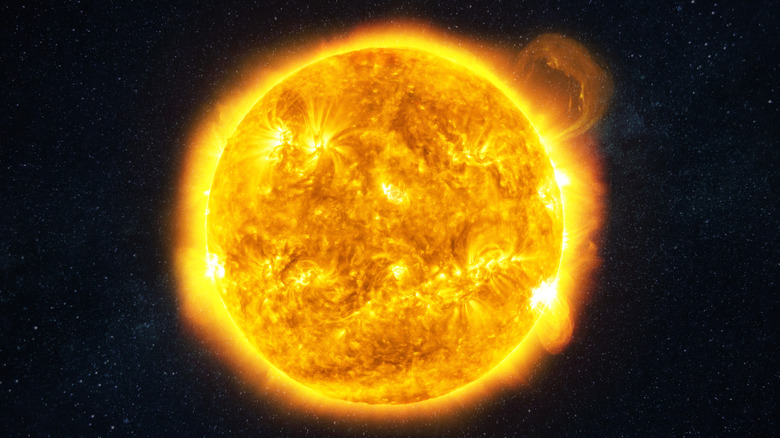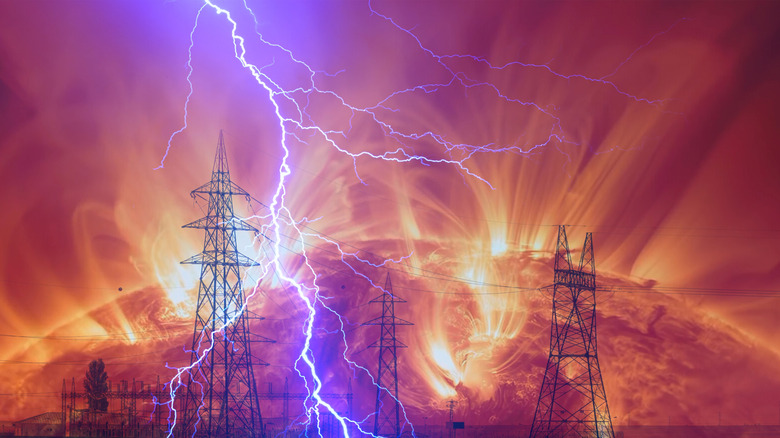Solar Storms Are More Frequent In 2025 - Here's How They May Affect You
For a long stretch of time, scientists were under the impression that our star was slowly entering hibernation. Known as the "deep solar minimum," this period started in the 1980s and ended in 2008. Some people believed this was the beginning of an era of little activity on the sun that would last for hundreds of years. Then, in 2008, the sun did something strange and shook itself awake.
Ever since, it has been increasingly active. Researchers at NASA's Jet Propulsion Laboratory have seen more plasma explosions and stronger magnetic fields in recent years, which indicates more solar activity. This means more solar flares, coronal mass ejections, and geomagnetic storms can happen more frequently, too. There's already evidence of this: Last year, the sun erupted in the strongest solar storm in more than 20 years, making the northern lights visible as far south as Mexico.
Of course, the beautiful auroras we see on Earth are only part of the story. Solar storms can seriously disrupt and destroy the technology we use every day. Power grids, GPS, and radio signals are particularly susceptible to the sun's flares. These solar storms also hinder NASA's Artemis mission, which aims to send astronauts back to the Moon and eventually send crews to Mars. As a result, space agencies are working to improve their forecasts so they can get ready for a future of worse weather in space.
Lots of the technology we use is at risk when storms hit
If you're concerned about being burnt or x-rayed by these solar storms, don't worry. We have our very own protective shield in the form of the Earth's thick atmosphere and magnetic field. Unfortunately, our technology doesn't have the same protections as us. A solar storm erupts when parts of the sun's entangled magnetic field stretch to the point where they snap and reconnect, resulting in violent bursts of energy and radiation. These bursts can reach the Earth in mere minutes, and when they do, it can interfere with satellites and the internet, or even blow power systems.
While this phenomenon may seem like something out of a science-fiction movie, the risks are real. Back in 1989, geomagnetic activity created by a solar storm cut off power to millions of people in Quebec within 90 seconds. Because our world is even more connected now than it used to be, high-frequency radio signals, like the ones used for aviation, shipping, and emergency communications, are especially at risk. During solar storms, even the GPS used by planes or ride-sharing apps can completely malfunction.
Our satellites can also be damaged, as they don't benefit from the protective barrier of our atmosphere. Strong solar flares and storms can blow their circuits, take them offline, and even degrade their lifespan. Given that these storms will become more frequent in years to come, this technology will likely have to adapt, especially considering how many satellites are in space these days.
The solar storms are not a health risk
Current research suggests that there's very little to worry about when it comes to how solar flares could impact our health. Some scientists have studied possible links between solar activity and health issues like heart problems and headaches, but the evidence is limited. For those of us nestled under the safety of the atmosphere's protective barrier, the most likely outcome is nothing more than a drop in signal or a sudden blackout. The main way they will impact us is most likely going to be if solar storms affect the power grid and lead to outages, as well as downed phone service or GPS navigation cutting out. A strong storm could even leave traffic lights blinking or force airlines to reroute flights.
If there's a silver lining, it's that solar storms bring the northern lights to unexpected places, giving people far from the Arctic Circle a chance to experience the wonder of such a spectacle. Still, as our dependence on technology grows, so does our vulnerability to solar flares and storms. That's why NASA is investing heavily in missions such as the Interstellar Mapping and Acceleration Probe (IMAP), which will give us earlier warnings about solar events. For now, though, you don't need to worry about solar storms frying you with radiation. They may just test your patience the next time your Wi-Fi drops.


